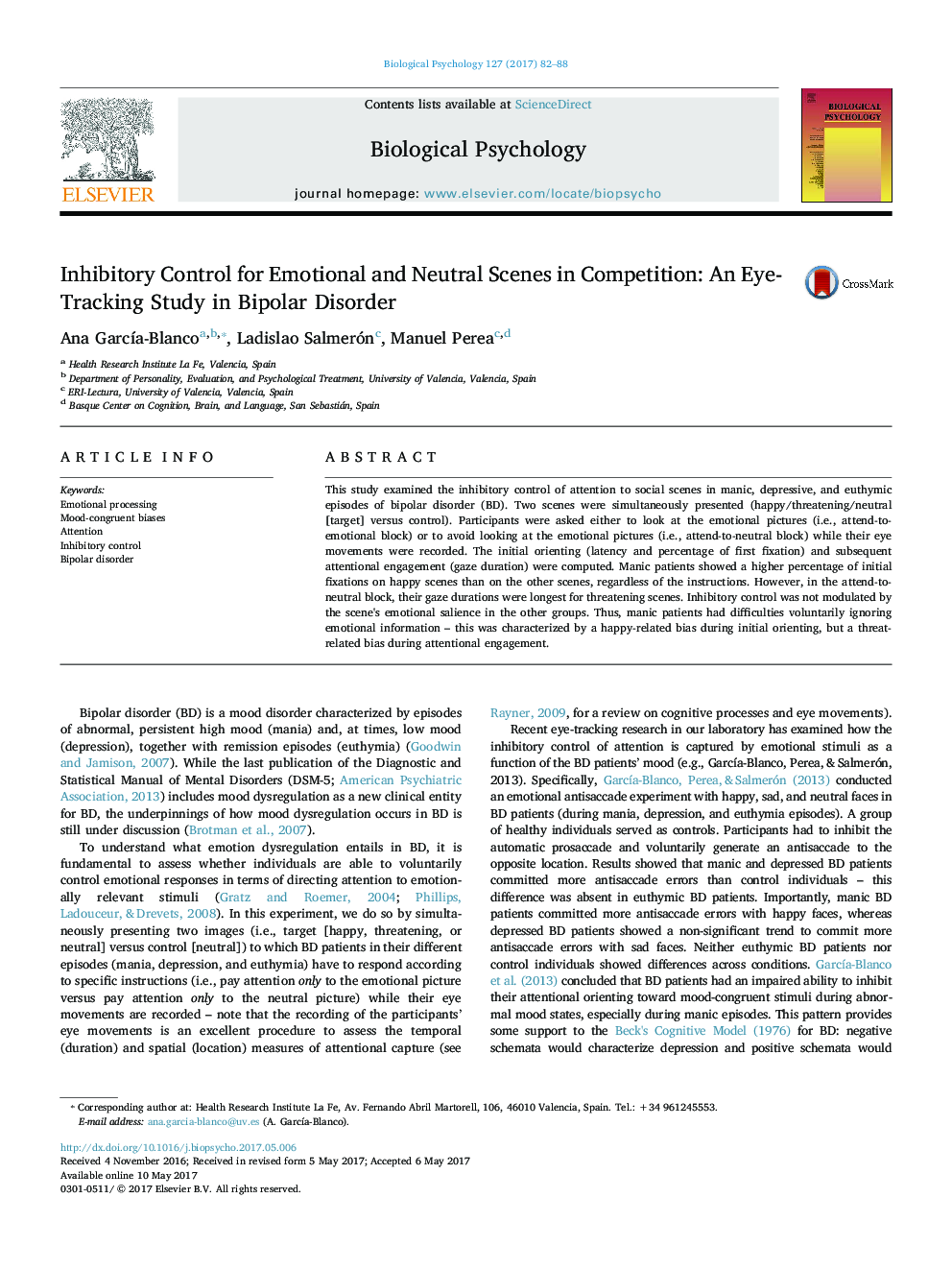| Article ID | Journal | Published Year | Pages | File Type |
|---|---|---|---|---|
| 5040481 | Biological Psychology | 2017 | 7 Pages |
â¢We examined the inhibitory control of attention to emotional scenes in bipolar disorder.â¢Eye movements were registered to assess these processes.â¢Manic patients showed a happy-related bias during initial orienting.â¢Manic patients showed a threat-related bias during attentional engagement.â¢No biases were found for euthymic and depressed patients.
This study examined the inhibitory control of attention to social scenes in manic, depressive, and euthymic episodes of bipolar disorder (BD). Two scenes were simultaneously presented (happy/threatening/neutral [target] versus control). Participants were asked either to look at the emotional pictures (i.e., attend-to-emotional block) or to avoid looking at the emotional pictures (i.e., attend-to-neutral block) while their eye movements were recorded. The initial orienting (latency and percentage of first fixation) and subsequent attentional engagement (gaze duration) were computed. Manic patients showed a higher percentage of initial fixations on happy scenes than on the other scenes, regardless of the instructions. However, in the attend-to-neutral block, their gaze durations were longest for threatening scenes. Inhibitory control was not modulated by the scene's emotional salience in the other groups. Thus, manic patients had difficulties voluntarily ignoring emotional information - this was characterized by a happy-related bias during initial orienting, but a threat-related bias during attentional engagement.
